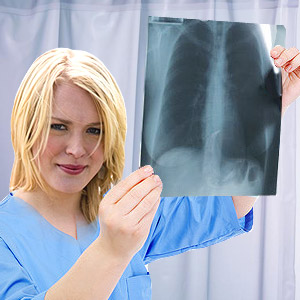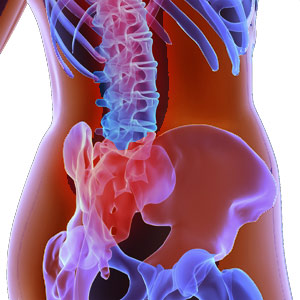Chronic Interstitial Lung Disease

Interstitial lung disease or ILD refers to a wide group of lung diseases affecting the interstitium (tissue that surrounds and separates the tiny air sacs/alveoale of the lungs). It is also known as diffuse parenchymal lung disease(DPLD).
In this disease the supportive tissues between the air sacs are inflamed rather than the air sacs themselves. Generally the inflammation spreads through out the lungs and is not confined to just one location. Interstitial lung diseases may also be referred to as interstitial pulmonary fibrosis or pulmonary fibrosis.
Interstitial lung disease
The inflammation can occur as:
Alveolitis: inflammation that involves the alveoli (air sacs)
Bronchiolitis: inflammation that involves the bronchioles (small airways)
Vasculitis: inflammation that involves the small blood vessels (capillaries)
All the disorders grouped under ILD can cause inflammation and progressive scarring of the lung tissue. Breathing gets difficult and eventually affects oxygen flow to the bloodstream. This disease can put a person at risk of developing high blood pressure and serious heart problems. In simple terms ILD is a disease of the lung and affects it in three ways:
- Lung tissue is damaged either by a known or unknown cause
- Inflammation of the walls of the air sacs in the lungs
- Progressive scarring (fibrosis) of the interstitium
Each of these disorders has different causes, prognoses and treatment but they are clubbed together under ILD as they have similar clinical symptoms, and physiologic traits. ILD or interstitial lung disease develops gradually, but in few cases it does show up all of a sudden. Few cases of ILD have definite causes whereas a few do not. Lung scarring is generally irreversible.
There is no cure for interstitial lung disease. Prescription medications can by and large slow down the damage. People with ILD never get to use their lungs completely. This disease affects men more than it does women and typically develops in people over age 50.
Interstitial lung disease types
Most of the interstitial lung diseases are diagnosed as pneumoconiosis (drug-induced disease) or hypersensitivity pneumonitis. The other types commonly reported are:
- Sarcoidosis
- Idiopathic pulmonary fibrosis
- Bronchiolitis obliterans
- Histiocytosis X
- Chronic eosinophilic pneumonia
- Collagen vascular disease
- Granulomatous vasculitis
- Goodpasture's syndrome
- Pulmonary alveolar proteinosis
Primary symptoms of Interstitial lung disease
- Feeling of breathlessness particularly during or after physical activity
- Dry cough that does not produce phlegm
Breathlessness worsens with the progression of the disease. People complain of breathlessness while indulging in simple activities like talking over phone, eating, and dressing up, etc.
Other symptoms of Interstitial lung disease
- Chest pain/discomfort
- Wheezing
- Fingernails tend to arc over the top of the fingertips
- Fatigue and weakness
- Loss of appetite
- Loss of weight
- Labored breathing
- Hemorrhage in lungs
Interstitial lung disease causes
Lung infections
Environmental and work-related factors: Continuous exposure to pollutants and toxins like silica dust, asbestos dust, hard metal dust, chlorine or ammonia gases, chemical fumes, etc.
Exposure to organic dust like dust from sugar cane, grain, moldy hay, animals, birds, etc.
Radiation therapy: Continuous exposure to radiation therapy, particularly for breast and lung cancer. Severity of damage depends on the extent of exposure to radiation. Chemotherapy could also be a contributing factor.
Drugs: Few drugs are capable of damaging the tissues lining the lungs. List of drugs include chemotherapy drugs, few psychiatric medications, few antibiotics, medications used to treat heart arrhythmias, etc.
Connective tissue disease and other disorders: These conditions do not affect the lung directly but affect the tissues in the entire body. Conditions include rheumatoid arthritis, lupus, dermatomyositis, Sjogren's syndrome, etc. Few researchers point out that GERD (gastro esophageal reflux disease) could also contribute to the condition.
If the cause is not determined, then such disorders without clearly known cause are grouped under idiopathic pulmonary fibrosis or idiopathic interstitial lung disease.
Who are at risk for Interstitial lung disease?
- Smokers
- People who have continuous exposure to environmental and work-related toxins
- People exposed to radiation and chemotherapy
- People suffering from GERD
- People who belong a family with a history of ILD
- People over 50 years of age
- People inhaling very high levels of therapeutic oxygen for more than 48 hours
Interstitial lung disease diagnosis
Identifying the cause can be difficult as ILD includes a broad range of disorders. The physician begins diagnosis by conducting a detailed investigation of the patient.
- Physical examination of the patient
- Recording medical history of patient
- Chest X-ray
- HRCT scan
- Exercise test: Treadmill or stationary bike exercises
- Pulmonary function test
- Bronchoscopy (transbronchial biopsy)
- Bronchoalveolar lavage: To decide on the course of treatment
- Video-assisted thoracoscopic surgery
Interstitial lung disease treatment
Interstitial lung disease cannot be cured, but treatment can provide ease to the patient. Treatment for ILD will vary from person to
person based on the following factors:
- Age
- Overall health
- Medical history
- Tolerance for medications, therapies and procedures
- Patient preference
- Anticipation for the course of the disease
Treatment offered will include one or more of the listed below options:
- Medications to soothe the lung tissue and to delay the progression of scarring
- Exercise
- Oxygen therapy provides the lung with clean air thereby lowering blood pressure. Oxygen therapy improves sleep and sense
of well-being. It can also help reduce blood pressure in the right side of the heart
- Breathing exercises
- Antioxidant rich diet
- Adequate sleep
- Lung transplantation is for patients who do not respond to any other treatment options
Lifestyle changes
- Quit smoking
- Eat a balanced, nutritious diet
- Exercise regularly
- Sign up in a pulmonary rehabilitation program
- Join a support group to get some emotional help
Top of the Page: Chronic Interstitial Lung Disease
Tags:#interstitial lung disease #interstitial lung disease treatment #chronic interstitial lung disease
Lung function Test
Chronic Interstitial Lung Disease
Emphysema Lung
Shortness of Breath
Eosinophilic Esophagitis
Other health topics in TargetWoman Women Health section:
General Women Health

Women Health Tips - Women Health - key to understanding your health ...
Cardiac Care
Women's Heart Attack Symptoms - Identify heart problems...
Skin Diseases
Stress Hives - Red itchy spots ...
Women Disorders
Endocrine Disorder - Play a key role in overall wellbeing ...
Women's Reproductive Health
Testosterone Cream for Women - Hormone replacement option ...
Pregnancy
Pregnancy - Regulate your lifestyle to accommodate the needs of pregnancy ...
Head and Face
Sinus Infection - Nearly 1 of every 7 Americans suffer from ....
Women and Bone Care

Slipped Disc - Prevent injury, reduce pain ...
Menstrual Disorders
Enlarged Uterus - Uterus larger than normal size ...
Female Urinary Problems
Bladder Problems in Women - Treatable and curable ...
Gastrointestinal Disorders
Causes of Stomach Ulcers - Burning feeling in the gut ...
Respiratory Disorders
Lung function Test - How well do you breathe ...
Sleep Management

Insomnia and Weight Gain - Sleep it off ...
Psychological Disorders in Women
Mood swings and women - Not going crazy ...
Supplements for Women
Women's Vitamins - Wellness needs...
Natural Remedies

Natural Diuretic - Flush out toxins ...
Alternative Therapy
Acupuncture Point - Feel the pins and needles ...
Top of the Page: Chronic Interstitial Lung Disease
Popularity Index: 100,914

